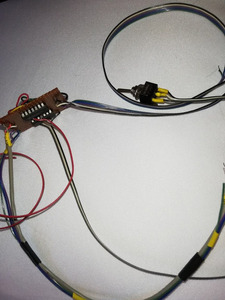To answer @NightShadowPT (Sorry didn't had time before). I think your purpose is to play games on a big screen LCD TV, not a LCD computer monitor.
RetroTINK-5X is an up-scaller for what I understand that can manage signal up to 480i. All what it can do is to input analog fixed 15KHz hsync with variable vsync signals and process them into a framebuffer through configurable filters to output a digital 1080p.
It will absolutely not work with VGA where hsync and vsync are both variable.
For me the main problem is to send native (or converted without change) VGA signals to a LCD monitor is more to get a decent picture because most of MS-DOS games use a non 4:3 display resolution to display in a 4:3 format screen. But that's also true for any machines with analog output.
That is not a problem for an analog display device as the electronics will cover things (common resolutions detection for the case of a "modern" VGA monitor / hardware timing control for machine with TV output or "old" VGA monitor) and adapt the picture to the display surface drawing lines for almost the whole screen surface. But it is a problem when such signal is converted to a matrix of "square dots" as LCD monitors are mode of. That combined with a bad up-scaling (some are better than other though) and the fact getting a good picture calibration for old games is a pain in the ass.
On PCs, from Windows XP, it is safe to use LCD monitors because there was mainly 3D games with configurable output graphic resolution and Windows XP manages color correction of LCD very well if it has the appropriate screen color profile installed.
So... A possible solution, I used many years ago, was to use a VGA to RGB framebuffer. It take a compatible VGA signal and convert it to a RGBV TV compatible signal. Then you can use your RetroTINK-5X to up-scale the output with de-interlacing and scan line gaps to 1080p on your LCD TV. Work very well with low-res games.
But if you absolutely do want scan line gap with PC hardware of around 1994 and you do not want to spend hundreds of dollars for an additional adapter you can get a MiSTer FPGA which can simulate accurately the behavior of many machines including a i80486 core named ao486 and its software can add scan-line gap to the output (should work for this core, but need to be checked to be sure). It's hundreds of dollar too, better value for what it can do and it connect natively to the TV.
You can also use a modern PC (or a Raspberry Pi 4 managing to find one...) and use RetroArch cores based on DOSBox. Less expansive and work quite well with pixel-shaders doing a good job to simulate CRT screen including the ratio correction.
Or try to just enjoy your PC on your LCD screen with blocky graphics and when you can if you want, buy a CRT monitor, no need for an expensive one. And play the right way (just my personal opinion here)
Knowing things is great. Understanding things is better. Creating things is even better.
